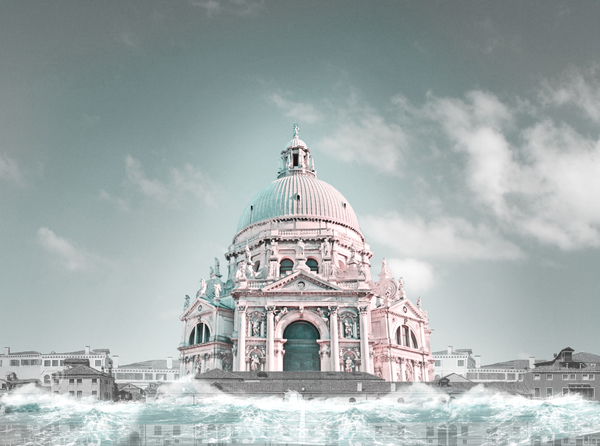The Drowned City
Venice, Italy
Maciej Augustynowicz & Daniel Mead
How does Venice function as a city and museum in the wake of 10 metre sea level rise?
This thesis aims to understand how the city of Venice will continue to function as sea levels rise due to global warming and how its relationship to tourism will inevitably change as a result. Is it best to preserve Venice, or let it decay into an elegant ruin; a poignant monument to the devastation of climate change? We believe the answer lies in between these extremes. Where Venice acts as a relic and a repository in which are stored all the trinkets and tokens of civilisations whose lands, like Venice have been reclaimed by the sea. Whilst some buildings decay, others are preserved, reinforced against the ocean, curated as a museum of sorts and housing a facsimile of the Mediterranean world, unravaged by climate change.
This thesis a joint project between Maciej and me that explores many scales, from global sea level rise down to the reinforcement of a single window in the Doge's Palace. I believe it was able to cover so much ground chiefly due to the fact we could work in a pair; to provide contrasting skills, different design approaches and most importantly, to be able to bounce ideas off one another.
This thesis combines the idea of a flooded Venice with displaying artefacts from across the flooded Mediterranean, to create an underwater museum of sorts. To achieve this, we were keen to draw on many types of architecture. There are carefully curated interventions designed to highlight and preserve specific views, facades or artefacts that take their cues from the existing architectural language (see KEY SPACE images). But there are also large scale, engineered infrastructural solutions designed to protect and navigate St. Mark's Square at large (see JOURNEY images).


